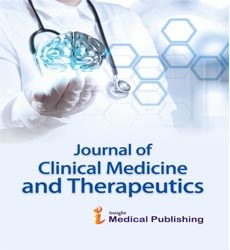Animal Model as an Implement of Clinical Exam: The Veterinary SurgeonÃÆâÃâââ¬Ãâââ¢s Lesson
Jean-Pierre Usdin*
Cardiologic Department, American Hospital of Paris, France
- *Corresponding Author:
- Jean-Pierre Usdin
Ex-Chief and Co-Founder of the American Hospital of Paris
Cardiologic Department, France
Tel: 0033684283073
E-mail: jp.usdin@cabinet-desperey.fr
Received Date: September 18, 2017; Accepted Date: September 22, 2017; Published Date: September 28, 2017
Citation: Usdin JP (2017) Animal Model as an Implement of Clinical Exam: The Veterinary Surgeon’s Lesson. J Clin Med Ther. 2:24.
Opinion
The way veterinary surgeons perform our pets’ medical evaluation is in my sense a good example of an excellent clinical exam! My students are always surprised with this iconoclast point of view.
A Role Play
As many happy human who are living close to a cat (or a dog or rabbit, whatever.) I go to the “animal’s physician” because regular check-up or health problem. During my Cat’s consultation, I think I am executing “A role play”. I am like my patients’ situation when they are in front of me: I do not know anything about animal’s health problem, I do not know how to conduct an animal exam, I am anxious about doctor’s conclusions.
My Cat and me trust Him, because He has a good practice, He is calm, He likes my companion, He does, according to me, a full clinical exam at every consultation, He knows the history of my Cat, He did previously good diagnosis, explanations, and efficient treatments. Same situations I try to reach with my patients.
What is the Matter?
Staying veterinary is totally different from a colleague’s medical visit. When I consult a doctor, or the reverse, we have the same language, we know (not always in detail) the symptoms, and there is a kind of communion, a professional exchange, nothing to do with my Cat’s consultation:
Number one: My position. I have my little papers (1) to explain and not forget any details or symptoms, I am nervous and I try to appear calm, I sometimes give my own inappropriate opinion mixing the events, backward then forward, making the history difficult to understand. I hesitate when the veterinary asks a specific question. In one word: I am anxious.
Number two: My Cat’s felling. Is she calm, is she assured? I try to look relaxed not transmitting my own anxiety.
Number three: Veterinary technique. His method to perform physical exam is always remarkable! He palpates deeply the abdomen, looks the skin, fur, eyes, oral cavity, lung and heart sounds, checks temperature. It is not an overestimation to say his clinical exam is more accurate than mine: prescribing blood tests, ultrasonography, X-ray’s, is not as easier as in human being. His clinical opinion has to be strong enough to make a diagnosis, with no more investigations, if possible.
Number four: His prescriptions. Treatment adherence is conditioned by doctors’ explanations. It is so difficult to give oral or subcutaneous medicine! “My adherence” will be better if I know the situation is serious and if I understand the reasons of a long term treatment.
Number five: The way “we” leave the office. Sometimes I am reassured; sometimes I am blue with many questions remaining in my head in spite of veterinary empathy. For sure I will text or email while at home!
When I am health minister
Human beings’ doctors, ironically use to say “I did a veterinarian type of medicine” while taking care of a patient not really compliant or with a medical history difficult to record or with a not well understood language [1].
Pushing my subversive opinion, as Health minister, I will request to introduce during medical studies (and ac Continuous Medical Education) a clinical exam course in veterinary surgeon office, I am sure it will be constructive in our medical training.
References
Open Access Journals
- Aquaculture & Veterinary Science
- Chemistry & Chemical Sciences
- Clinical Sciences
- Engineering
- General Science
- Genetics & Molecular Biology
- Health Care & Nursing
- Immunology & Microbiology
- Materials Science
- Mathematics & Physics
- Medical Sciences
- Neurology & Psychiatry
- Oncology & Cancer Science
- Pharmaceutical Sciences
